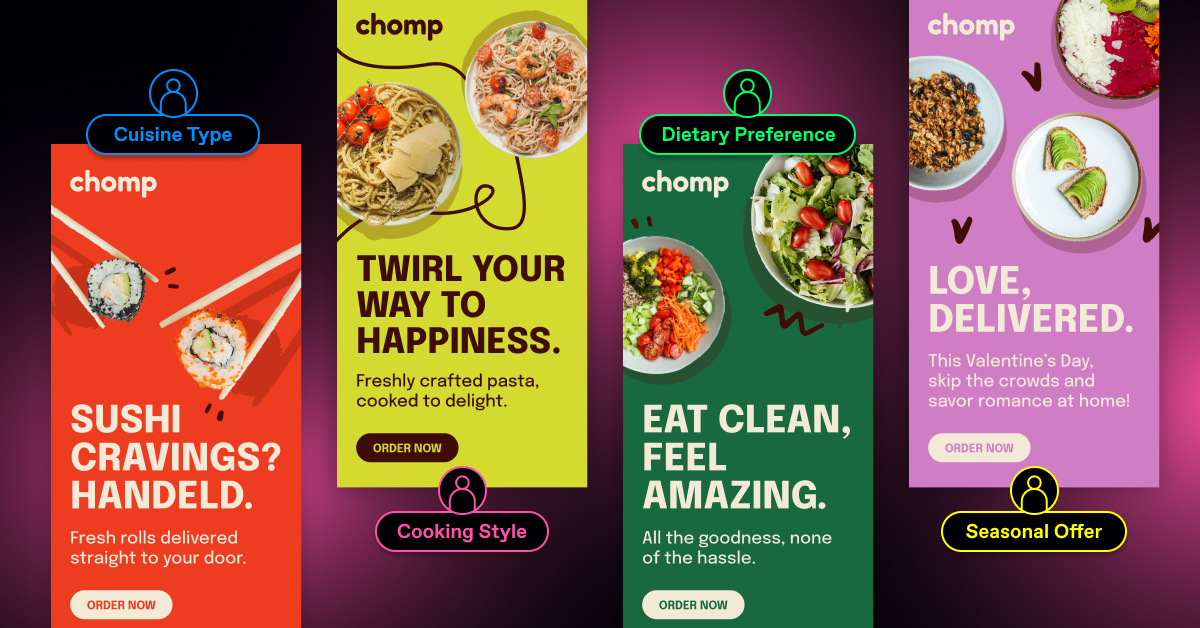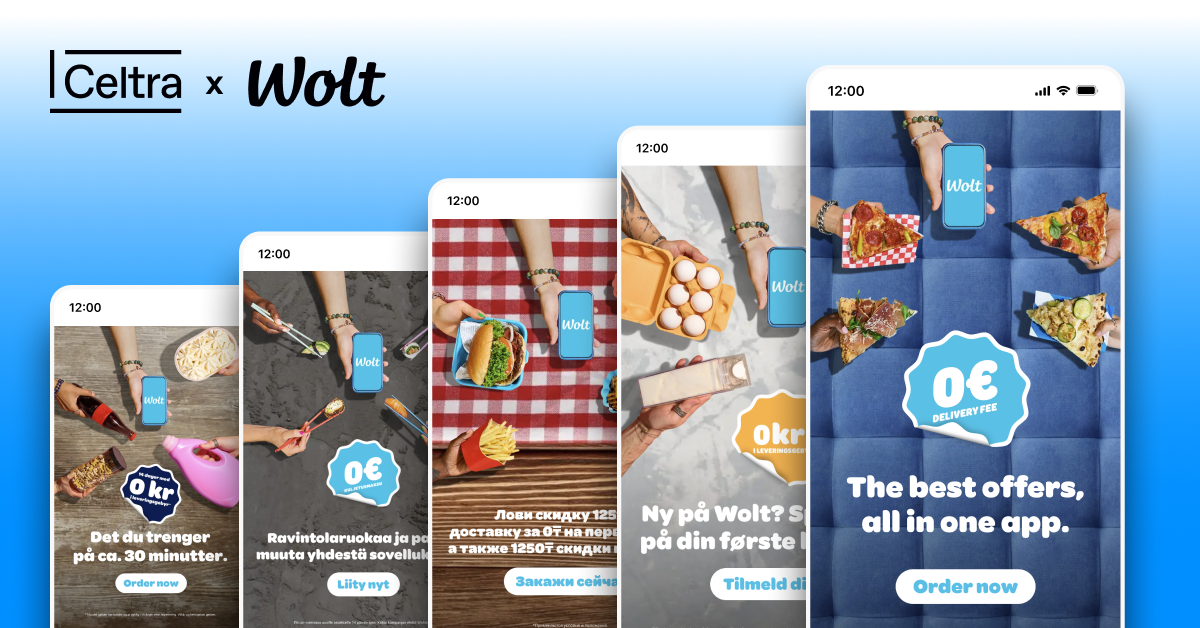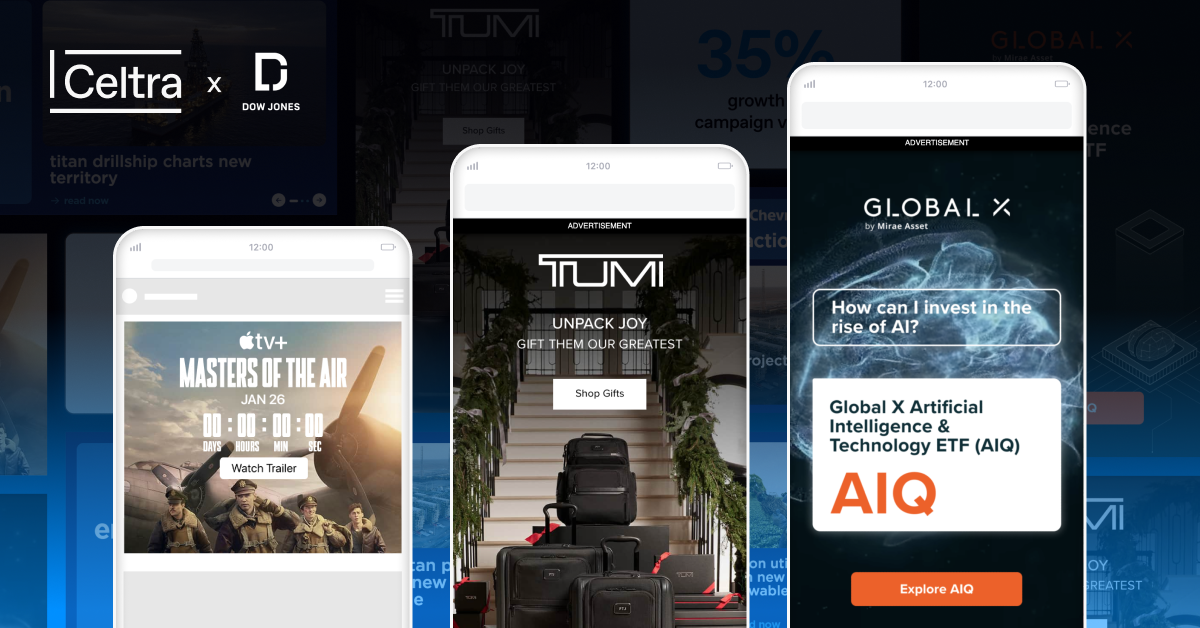Let’s be honest—no one likes irrelevant ads. You know the ones: an ad for winter coats in the middle of a heatwave or a promotion for something you just bought yesterday.
Ad personalization is like giving your audience a VIP experience—showing them exactly what they want, when they want it. Instead of generic ads that get ignored, personalized ads speak directly to users based on their interests, behaviors, and demographics. The result? More engagement, higher conversions, and ads that actually feel relevant (instead of annoying).
In this guide, we’ll break down the key elements of ad personalization, the different ways you can personalize ads, and how to do it efficiently at scale. Let’s dive in!
What is ad personalization?
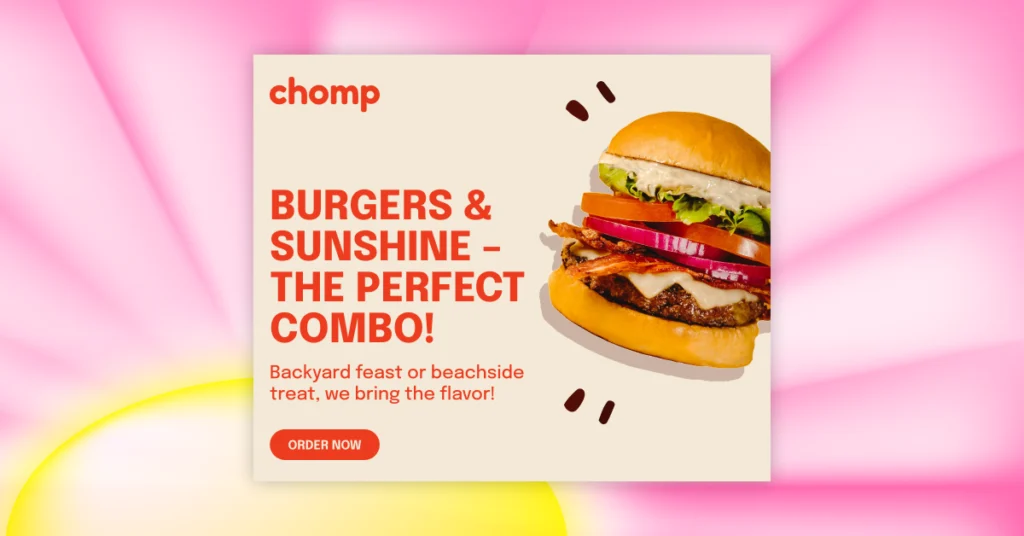
Advertisers use ad personalization to tailor ads to individual users based on their interests, behaviors, and demographics. This approach helps brands create highly relevant and engaging experiences that feel less like traditional ads and more like helpful recommendations.
Think of it this way: You’re planning a trip, and just as you start browsing destinations, a perfectly timed travel deal pops up. Or, after researching training tips, you see an ad for the ideal pair of running shoes. Personalized ads aim to deliver the right message at the right moment, fostering meaningful connections that drive real results.
By leveraging personalization, advertisers can better engage potential customers, ensuring their ads reach the most relevant audiences and ultimately improve conversion rates.
What are the key benefits of personalized ads?
Personalizing ads empowers businesses to reach the right users at the right time, increasing the likelihood of engagement and action. This targeted approach leads to stronger ad performance and a better user experience. Here’s how:
- Higher engagement: Relevant ads grab attention and encourage interaction.
- Increased conversions: Users are more likely to act when ads align with their needs, boosting conversion and click-through rates.
- Stronger return on investment (ROI): Targeting the right audience improves ad efficiency, leading to higher click-through rates (CTR) and better return on ad spend (ROAS).
- Better user experience: Personalized ads help consumers find what they need faster with less effort, making interactions feel helpful rather than intrusive.
When done well, personalization enhances customer satisfaction and loyalty. A report by Accenture(*) found that 91% of consumers are more likely to buy from brands that offer personalized recommendations and offers.
The key to successful personalization is providing value—demonstrating how your brand can solve a specific problem or improve the customer’s life. By focusing on enhancing the user experience, you not only boost engagement but also build long-term relationships with your audience.
Curious how companies like AdTheorent personalize their ads? Learn more about their personalized video campaign that resulted in a 98% video completion rate and 70 QR code scans.
How ad personalization works
The number one thing you need to get started with ad personalization is data—but with third-party cookies disappearing, brands must rethink how they collect it. Here’s a breakdown of the key steps:
1. Data collection
Personalization starts with gathering user data from multiple sources:
- First-party data: Information collected directly from users, such as website visits, purchase history, and interactions with your brand.
- Third-party data: Insights from external sources like ad networks, social media interactions, and browsing behavior across different websites.
But as cookies crumble, brands that embrace privacy-first personalization will gain consumer trust—and drive better results.
2. Data processing
Usually, AI-powered analytics are used to process the collected data, identify patterns, and group users based on shared characteristics such as demographics, interests, and behaviors.
This segmentation allows advertisers to refine targeting strategies and ensure ads are shown to the most relevant audiences.
But the challenge? Consumers are increasingly wary of how their data is used.
Navigating privacy laws and data restrictions in personalized ads
Whenever you’re handling user data for personalized ads, it’s important to follow some essential rules and guidelines in place.
With increasing privacy regulations, such as GDPR and Apple’s App Tracking Transparency (ATT), brands must adapt their personalization strategies to:
Use first-party data for smarter targeting
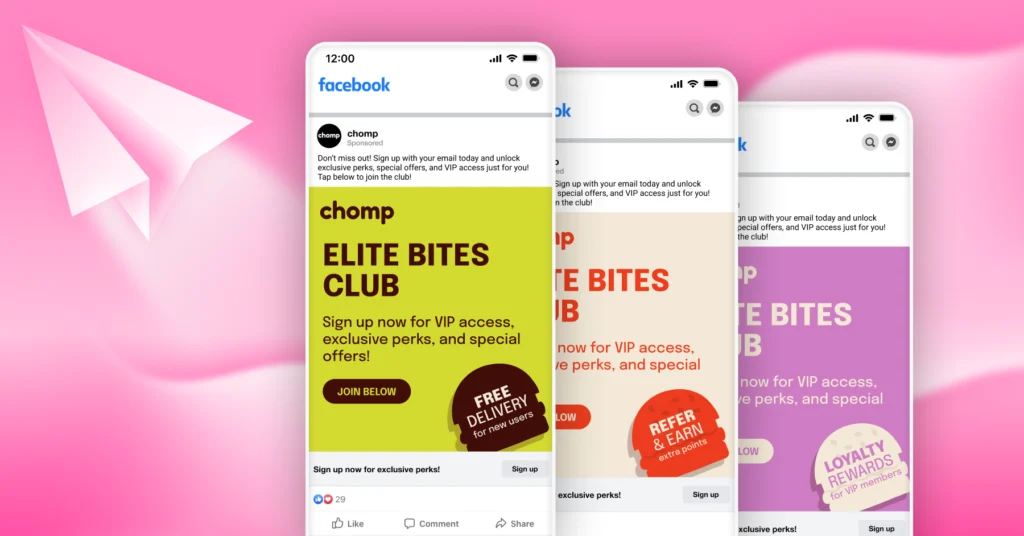
- Collect valuable insights directly from user interactions on your website, mobile apps, and email subscriptions.
- Leverage data such as browsing behavior, past purchases, and customer preferences to tailor ad experiences.
- Encourage users to opt in by offering personalized content, special offers, or loyalty program benefits in exchange for their data.
Leverage contextual targeting instead of behavioral tracking
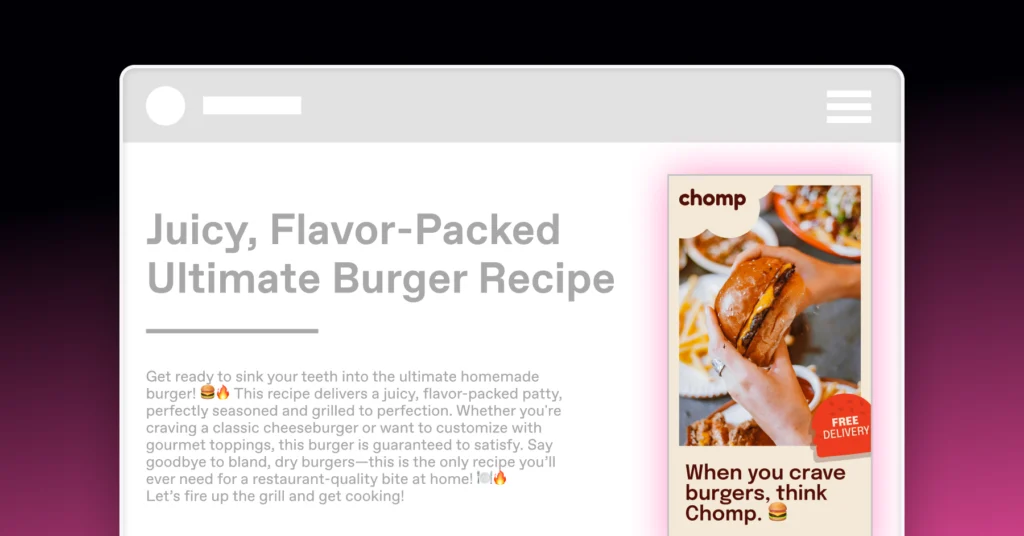
- Serve ads based on the content users are currently viewing rather than tracking their past behavior.
- For example, a sportswear brand can place ads on fitness-related articles instead of following users across the web.
- Contextual targeting ensures relevance without relying on cookies or invasive tracking methods.
Implement AI-driven analytics for smarter insights
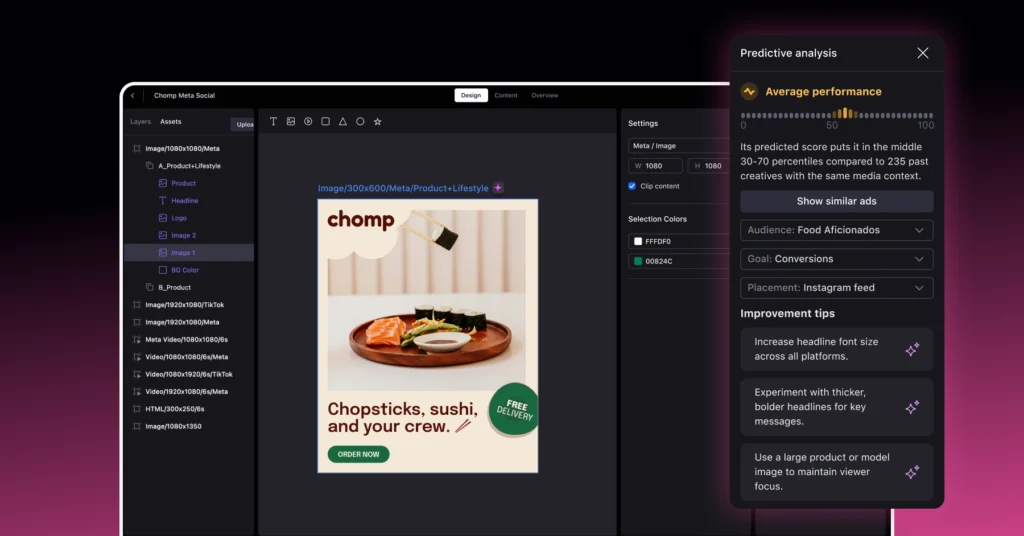
- Use machine learning models to analyze aggregated data and predict user intent without collecting personally identifiable information (PII).
- AI can identify trends and optimize ad placements based on real-time signals, such as content engagement and location context.
- Privacy-focused AI solutions, like federated learning, allow data processing without exposing individual user data.
But data collection is just one piece of the puzzle—how can brands effectively craft personalized ads that engage and convert? Let’s explore.
How to personalize ads: Examples and strategies
Let’s explore the best ways to make your audience feel like you’re reading their minds (in a good way):
1. Personalization based on user demographics
Target users based on age, gender, income level, and other demographic factors.
Example: A luxury watch brand serves different ad creatives to male and female audiences, highlighting specific design features tailored to their preferences.
2. Location-based personalization
Deliver ads based on a user’s real-time or historical location data.
Example: A fast-food chain promotes a special deal available at the nearest restaurant to users within a 5-mile radius.
3. Interest-based personalization
Show ads tailored to users’ browsing history, search behavior, and social media activity.
Example: A fitness brand displays targeted ads for yoga mats to users who have previously searched for yoga workouts or followed fitness influencers.
4. Weather-based personalization
Adjust ad content based on the local weather conditions.
Example: A sunscreen brand promotes SPF 50 products in sunny regions while showcasing hydrating skincare in colder climates.
5. Seasonal and holiday personalization
Modify ads to align with seasonal trends and holidays.
Example: A retail brand showcases different fashion collections based on the current season—warm coats in winter and summer dresses in spring.
6. Purchase history-based personalization
Recommend products based on a user’s past purchases.
Example: An e-commerce store suggests accessories that complement a customer’s recent shoe purchase.
7. Behavior-based personalization
Retarget users based on their interactions with previous ads or website visits.
Example: A travel agency retargets users who browsed flights to Paris with personalized offers for hotel discounts in the city.
Streamlining ad personalization with Celtra
Right, now you know you need to collect different kinds of data if you want to get started with ad personalization. But what happens once you’ve got that down? Creating and managing all the creative variants you’d need to generate personalized ads at scale is extremely resource- and time-consuming.
That’s where technology like automation and AI-powered capabilities come in.
Celtra’s Creative Automation platform enables brands and marketers to:
- Create personalized ads at scale with AI-driven tools.
- Ensure brand consistency across multiple markets.
- Optimize performance using real-time creative insights.
- Streamline workflows by automating asset production and approvals.
Ready to revolutionize your ad personalization strategy?
Frequently asked questions
Ad personalization is the strategy of tailoring ads based on user data, such as demographics, location, and interests, to improve engagement and relevance.
It uses data collection, AI-driven analytics, and creative automation to create and deliver relevant ads to specific audience segments.
It enhances engagement, improves conversion rates, boosts ad performance, and provides a better user experience.
Brands can use creative automation platforms like Celtra to efficiently create, manage, and optimize personalized ads at scale.

